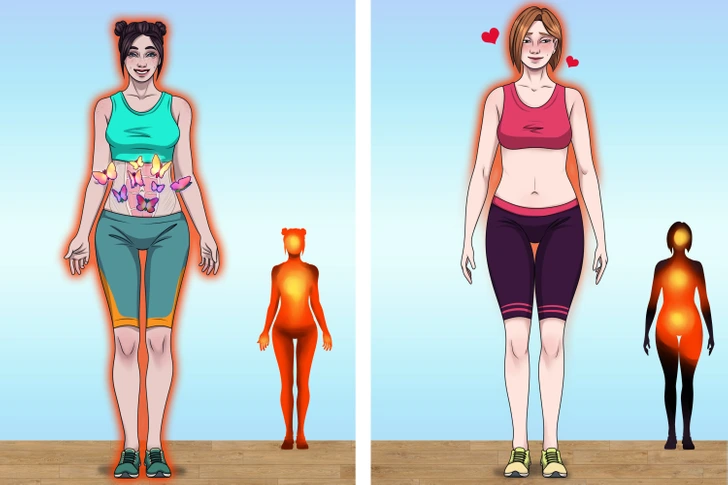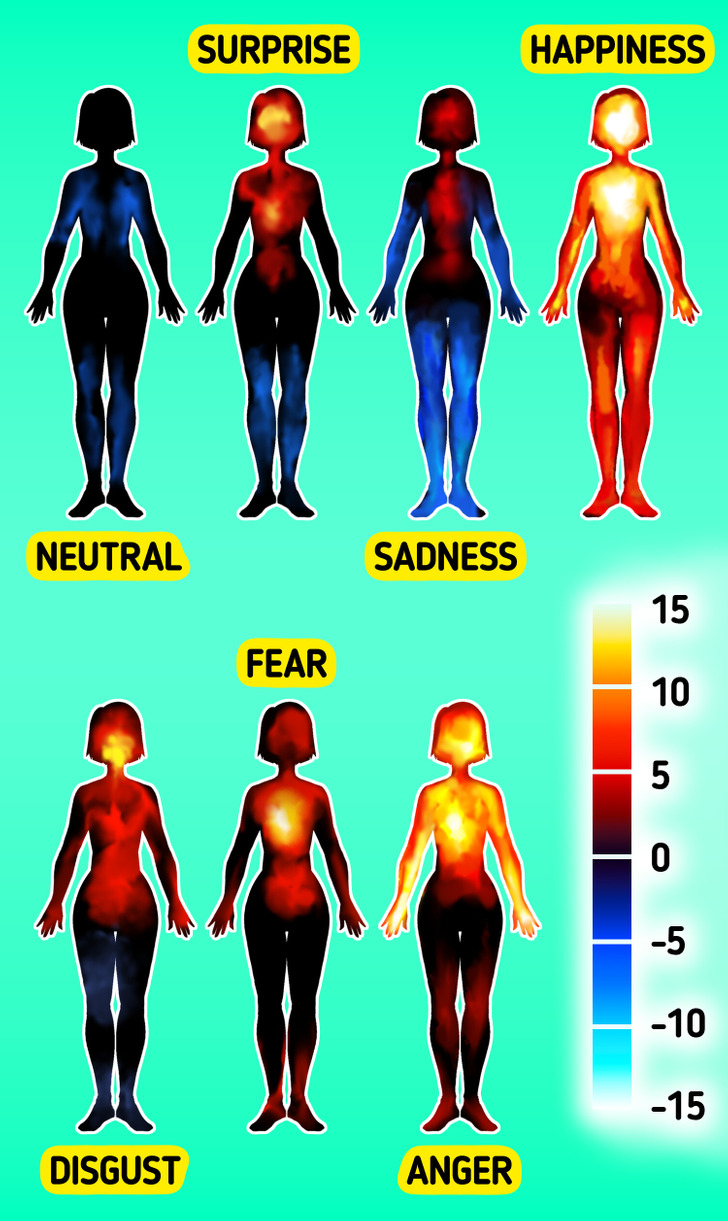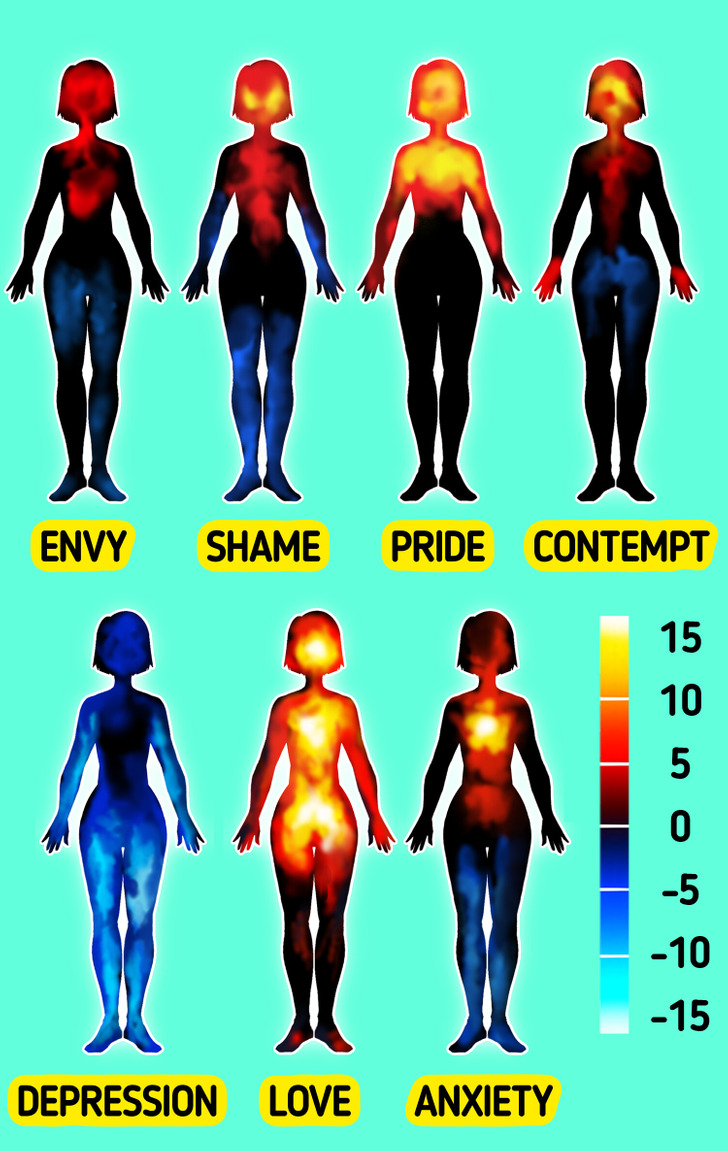10 Times Genes Were Real Pranksters

When Finnish scientists set out to unravel the mysteries of human emotions, they embarked on a journey that transcended cultural boundaries. Their quest led them to a remarkable discovery: emotions aren’t confined to facial expressions alone. Instead, they resonate throughout our entire being, echoing in the depths of our bodies, regardless of where we call home.

People described how joy and affection ignited a symphony of sensations, pulsing through every fiber of their being. Conversely, the weight of despair seemed to cast a shadow, numbing their limbs and clouding their thoughts. As for the primal stirrings of danger and dread, they ignited a fiery storm within the chest. And when fury took hold, it surged outward, electrifying the arms with a potent energy.
With these intricate bodily maps of emotion, scientists envision a future where psychologists wield a new tool: body emoticons. Perhaps one day, these colorful diagrams will illuminate the path to understanding and healing mood disorders, offering solace where there once was only confusion.

Our brains talk to our bodies when we feel things, explains Lauri Nummenmaa, a psychologist at Aalto University who led the study.
Just imagine you see a snake and you get scared. Your body gets ready to run away by sending more oxygen to your muscles and making your heart beat faster. It happens automatically; we don’t have to tell it what to do.
This idea has been around for ages. But scientists are still figuring out if each feeling has its own set of body changes and if these changes help us know what we’re feeling. To dig deeper, Nummenmaa and his team did a simple computer test with about 700 people from Finland, Sweden, and Taiwan.

The scientists gave the volunteers pictures of two people with nothing inside. Then, they asked the volunteers to think about different feelings like love, anger, or pride. The volunteers colored in the parts of the body that felt active or inactive when they thought about each feeling.
Not everyone felt the same way about each feeling. But when the scientists looked at all the answers together, they noticed common patterns for each feeling. They shared these patterns in a science journal.
Even though they’re not sure how these feelings match with what’s happening inside the body, other studies have shown that people with mood problems often feel physical pain. There’s also some proof that changing how you move or stand can change how you feel.
People made pictures of where they feel simple and complicated emotions. Warm colors show places where they feel something during the emotion. Cool colors show areas where they don’t feel anything.


Creating a personal map of emotions is like charting the terrain of one’s inner world, navigating through peaks of joy, valleys of sorrow, and the vast expanses in between. It’s an intricate web of feelings, shaped by experiences, memories, and perceptions.
Scientific studies in psychology, neuroscience, and anthropology provide a framework for understanding the universal principles underlying human emotions, offering valuable insights into the complexities of the human psyche. Through this comparison, we not only gain a deeper understanding of ourselves, but also contribute to the collective understanding of what it means to be human.
Our body is a sophisticated system, and by simply tuning in and listening to its cues, we can decipher its intricate code.











